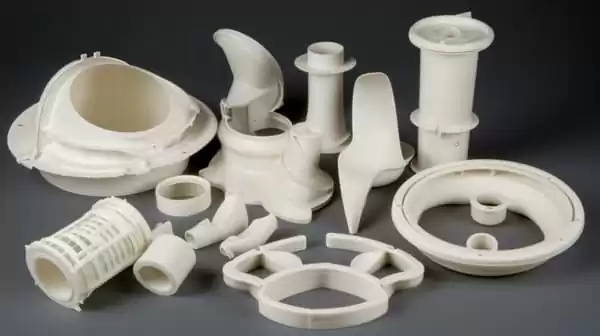Introduction
In today's manufacturing landscape, vacuum forming has emerged as a crucial process with widespread applications in various industries. This manufacturing technique involves shaping a thermoplastic sheet over a used injection molding, using a vacuum. The result makes vacuum forming is a versatile and cost-effective solution: vacuum formed parts. These parts possess exceptional durability, strength, and design flexibility, making them highly sought after in numerous sectors.
The importance of vacuum formed parts cannot be overstated, as they serve as the building blocks for various products and components across industries. From packaging to automotive, medical to point-of-purchase displays, vacuum formed parts play a pivotal role in meeting the diverse needs of manufacturers and consumers alike. The ability to create customized, lightweight, and durable parts has made the process of vacuum forming machines a preferred choice in manufacturing processes.
With its affordability and versatility, the vacuum forming method has revolutionized the production of complex shapes and functional designs. The process enables manufacturers to develop innovative solutions while maintaining cost efficiency. Whether it's creating protective packaging, manufacturing intricate automotive components, or producing medical equipment enclosures, vacuum formed parts offer unparalleled advantages in terms of cost-effectiveness, design freedom, and performance.
As we delve deeper into the realm of vacuum forming plastic part, we will explore the diverse applications and industries where these parts have become indispensable. From the packaging industry's need for secure and eye-catching solutions to the automotive sector's demand for lightweight components, vacuum formed parts continue to shape our modern manufacturing landscape.
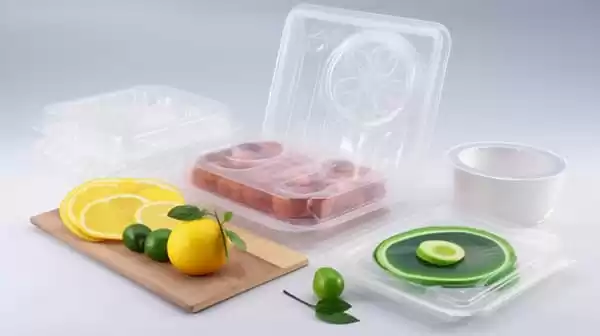
II. Common Applications of Vacuum Formed Parts
A. Packaging industry
In the packaging industry, vacuum pressure forming plays a vital role in creating customized and protective packaging solutions. Vacuum formed trays, blisters, and containers are widely used for safely housing products during transportation and storage. The benefits of vacuum formed packaging solutions include:
Secure enclosure:
Vacuum formed trays plastic boxes and containers provide a snug fit, preventing product movement and potential damage.
Customizability:
The versatility of vacuum forming allows for the creation of packaging solutions tailored to specific product dimensions and shapes.
Visual appeal:
Vacuum formed packaging can be designed with attractive aesthetics, enhancing shelf presence and brand recognition.
Accessibility:
Vacuum formed packaging enables easy product display and retrieval, improving convenience for both retailers and consumers.
B. Automotive sector
The automotive industry relies on the process of vacuum forming for various interior components in vehicles. Vacuum formed parts offer lightweight alternatives to traditional materials such as metal or fiberglass, contributing to improved fuel efficiency. Examples of vacuum formed parts in the automotive sector include:

Dashboards:
Vacuum formed dashboards provide both functionality and design flexibility, integrating features like instrument clusters, air vents, and storage compartments.
Door panels:
Vacuum formed door panels offer enhanced durability and can be customized with integrated speaker enclosures, armrests, and controls.
Seat backs:
Vacuum formed seat backs combine comfort and support with lightweight construction, allowing for efficient vehicle design.
C. Medical and healthcare applications
Vacuum forming plays a crucial role in the medical and healthcare sectors by providing hygienic and customizable solutions. Some common applications include:
Enclosures for medical equipment:
Vacuum formed parts are used to create protective enclosures for medical devices, ensuring sanitation and durability.
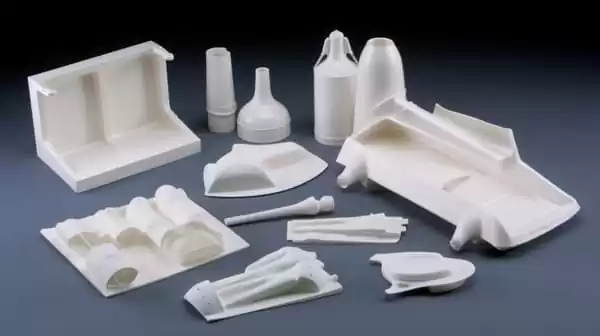
Instrument trays:
Vacuum formed trays are utilized for organizing and safely storing various medical supplies and instruments during procedures.
Surgical device components:
Vacuum formed parts can be integrated into surgical devices, offering precise functionality and ease of sterilization.
D. Point-of-purchase displays
Point-of-purchase (POP) displays utilize vacuum formed components to create eye-catching product showcases in retail environments. The advantages of using vacuum forming formed parts in POP displays include:

Unique shapes:
Vacuum forming allows for the creation of visually striking and unique shapes that attract customers' attention.
Product visibility:
Transparent or translucent vacuum formed components enable clear product visibility, showcasing key features and enticing consumers.
Customizability:
Vacuum formed displays can be tailored to fit specific product requirements, ensuring proper presentation and brand alignment.
E. Electronics and electrical enclosures
Vacuum formed parts find applications in the electronics and electrical industries for the production of protective enclosures. Key uses for vacuum forming tools include:
Housings for electronic devices:
Vacuum formed enclosures offer excellent protection against environmental factors such as dust, moisture, and impact.
Integration of functional features:
Vacuum formed parts can be customized to incorporate elements like buttons, display windows, and cable management features.
F. Recreation and leisure industry
The recreation and leisure industry benefits from vacuum formed parts and plastic materials due to their durability and resistance to harsh weather conditions. Some examples include:
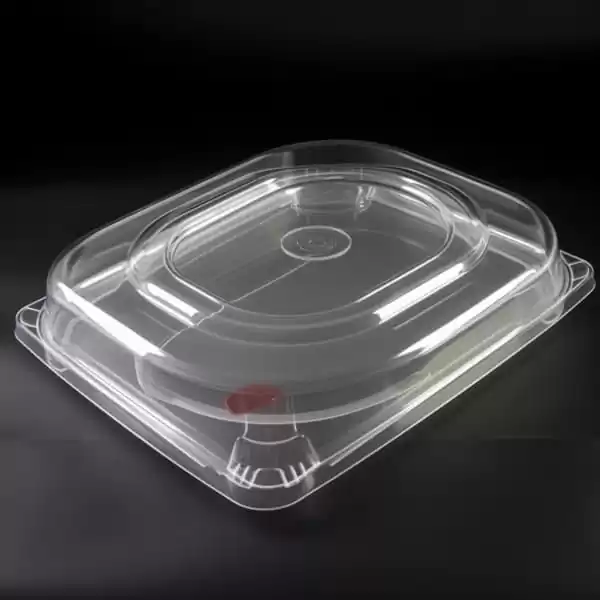
Outdoor equipment:
Vacuum formed parts are used in the production of kayak hulls, canoe components, spa and hot tub shells, and garden equipment.
Recreational vehicle parts:
Vacuum formed components find applications in the manufacturing of components for recreational vehicles such as motorhomes, caravans, and trailers.
By catering to the specific needs of each industry, vacuum formed plastic parts have become indispensable in creating efficient, cost-effective, and aesthetically pleasing solutions.

III. The Vacuum Forming Process and Key Components
A. Explanation of the vacuum forming process
Vacuum forming is a manufacturing process that involves shaping a thermoplastic sheet into a desired form by using a vacuum. The process made using vacuum forming typically consists of the following steps:
Plastic sheet selection:
A suitable thermoplastic sheet, such as acrylonitrile butadiene styrene (ABS), polyvinyl chloride (PVC), or high-density polyethylene (HDPE), is chosen based on the desired properties of the final product.
Mold design and preparation:
A mold, which determines the shape and dimensions of the finished part, is designed and prepared. The mold can be made from materials like aluminum, wood, or composite materials.
Vacuum forming machine operation:
The molded plastic sheet is loaded onto a diy or other vacuum forming machines to operate, which typically consists of a heating element, a frame to hold the mold, and a vacuum system. The machine is operated to control various parameters of the process, including heating temperature and vacuum pressure.
Heating the plastic sheet and shaping it over the mold:
The structural foam plastic sheet is heated until it becomes pliable and reaches the desired forming temperature. Once heated, the sheet is draped over the mold, and a vacuum is applied. The atmospheric pressure forces the sheet to conform to the shape of the mold.
Vacuum pressure and cooling:
The vacuum pressure is maintained until the plastic sheet cools and solidifies. This ensures that the formed part retains its shape and dimensional stability. Once cooled, the vacuum is released, and the formed part is removed from the mold.
B. Key Components Involved
Plastic Sheet:
The plastic sheet is an essential component of the whole vacuum forming mold process. It is heated to a specific temperature to make it soft and malleable, allowing it to conform to the shape of the mold.
Mold:
The mold determines the desired shape of the final product. It can be made from various materials such as aluminum, wood, or composite materials. The mold can be either a positive mold, which replicates the shape of the desired part, or a negative mold, which creates a cavity for the part.
Vacuum Forming Machine:
The vacuum forming machine provides the necessary equipment to create a vacuum and shape the heated plastic sheet. It consists of a vacuum chamber, heating elements, and a frame that holds the mold and plastic sheet. The machine uses a vacuum pump to remove the air between the mold and the plastic sheet, causing the melted plastic sheet to conform to the mold's shape.
C. Overview of the Steps in the Vacuum Forming Process
The vacuum forming process typically involves the following steps:
Heating:
The plastic sheet is heated using ceramic heaters or other heating elements until it reaches the proper forming temperature. The temperature varies depending on the type and thickness of the plastic material.
Positioning:
The heated plastic sheet is then positioned over the mold, ensuring proper alignment and coverage.
Vacuum Forming:
The diy vacuum forming machines operate creates a vacuum between the mold surface and the plastic sheet. The atmospheric pressure forces the heated sheet to conform to the shape of the mold, creating the desired shape.
Cooling and Trimming:
After the formed part has cooled and solidified, it is removed from the mold. Excess material is trimmed or cut away to achieve the final shape.
The vacuum forming process offers numerous advantages, including its low cost in-effectiveness, design flexibility, and the ability to create complex shapes with consistent quality. It is a widely used manufacturing method for producing a variety of vacuum formed parts across different industries.
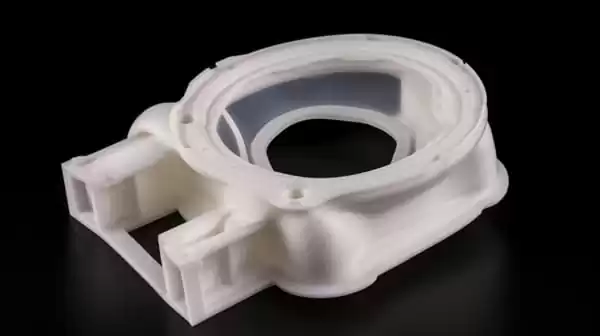
Conclusion
Vacuum forming is an adaptable manufacturing process used in vacuum forming, with numerous applications across industries. Vacuum formed parts are used across packaging, automotive, medical, retail and food sectors - such as packaging solutions that ensure product safety while improving shelf appeal or automotive components that reduce weight and enhance fuel efficiency - among many others. Vacuum formed parts play an essential part in meeting these industry requirements through customization, protection and design flexibility to meet them.
Vacuum forming has an enormous value to numerous industries, thanks to its cost-efficiency, design versatility and ability to form complex shapes. As such, using industrial vacuum forming machines has become one of the preferred manufacturing techniques used today for producing parts with dimensional stability, chemical resistance and structural integrity - crucial considerations in industries like healthcare and food packaging.
Vacuum forming provides unique advantages when vacuum formed products used for creating eye-catching point-of-purchase displays in the retail and marketing industry settings or producing customized medical equipment enclosures, providing for efficient production that meets specific requirements while contributing to cost reduction and process optimization.
As technologies and materials advance, vacuum formed parts are projected to continue expanding their applications. As more cost-effective and versatile manufacturing methods and processes emerge, the vacuum forming technique will likely remain an indispensable option for industries seeking cost-cutting and versatile solutions. Thanks to its ability to create molds quickly, produce complex shapes easily, and allow design flexibility, vacuum forming stands as one of the premier manufacturing techniques of today.

